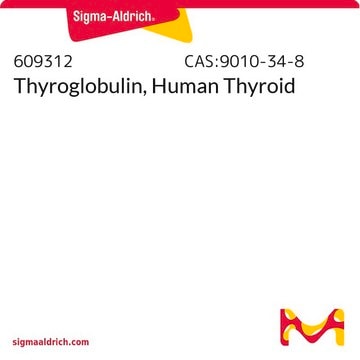654380
Tunicamycin
from Strepomyces lysosuperficus, ≥98% (A+B+C+D, HPLC), powder, N-acetylglucosamine transferase, Calbiochem
Synonyme(s) :
Tunicamycin, Streptomyces lysosuperficus
Sélectionner une taille de conditionnement
262,00 €
Date d'expédition estimée le29 mars 2025
Sélectionner une taille de conditionnement
About This Item
262,00 €
Date d'expédition estimée le29 mars 2025
Produits recommandés
Nom du produit
Tunicamycin, Streptomyces lysosuperficus,
Description
Tunicamycin, Streptomyces lysosuperficus
Niveau de qualité
Essai
≥98% (A+B+C+D, HPLC)
Forme
powder
Fabricant/nom de marque
Calbiochem®
Solubilité
DMSO: 10 mg/mL
DMF: soluble
pyridine: soluble
Conditions d'expédition
ambient
Température de stockage
2-8°C
Chaîne SMILES
N4(C=CC(=O)NC4=O)[C@@H]1O[C@@H]([C@H]([C@H]1O)O)C(O)C[C@H]2O[C@@H]([C@@H]([C@H]([C@H]2O)O)NC(=O)\C=C\CC(C)C)O[C@H]3O[C@@H]([C@H]([C@@H]([C@H]3NC(=O)C)O)O)CO
InChI
1S/C30H46N4O16/c1-11(2)5-4-6-16(38)32-19-23(43)20(40)14(47-29(19)50-28-18(31-12(3)36)22(42)21(41)15(10-35)48-28)9-13(37)26-24(44)25(45)27(49-26)34-8-7-17(39)33-30(34)46/h4,6-8,11,13-15,18-29,35,37,40-45H,5,9-10H2,1-3H3,(H,31,36)(H,32,38)(H,33,39,46)/b6-4+/t13?,14-,15-,18-,19-,20+,21-,22-,23-,24+,25-,26-,27-,28-,29-/m1/s1
Clé InChI
ZHSGGJXRNHWHRS-PEALBESXSA-N
Description générale
Actions biochimiques/physiologiques
N-linked glycosylation
thrombin-induced Ca2+ mobilization in cells
Avertissement
Notes préparatoires
Reconstitution
Autres remarques
Price, B.D., et al. 1992. J. Cell Physiol.152, 545.
Informations légales
Mention d'avertissement
Danger
Mentions de danger
Conseils de prudence
Classification des risques
Acute Tox. 1 Oral
Code de la classe de stockage
6.1A - Combustible acute toxic Cat. 1 and 2 / very toxic hazardous materials
Classe de danger pour l'eau (WGK)
WGK 3
Point d'éclair (°F)
Not applicable
Point d'éclair (°C)
Not applicable
Certificats d'analyse (COA)
Recherchez un Certificats d'analyse (COA) en saisissant le numéro de lot du produit. Les numéros de lot figurent sur l'étiquette du produit après les mots "Lot" ou "Batch".
Déjà en possession de ce produit ?
Retrouvez la documentation relative aux produits que vous avez récemment achetés dans la Bibliothèque de documents.
Les clients ont également consulté
Filtres actifs
Notre équipe de scientifiques dispose d'une expérience dans tous les secteurs de la recherche, notamment en sciences de la vie, science des matériaux, synthèse chimique, chromatographie, analyse et dans de nombreux autres domaines..
Contacter notre Service technique







![PERK Inhibitor I, GSK2606414 GSK2606414 is a cell-permeable, highly potent inhibitor of EIF2AK3/PERK (IC₅₀ = 0.4 nM; [ATP] = 5 µM). Targets PERK in its inactive DFG conformation at the ATP-binding region.](/deepweb/assets/sigmaaldrich/product/structures/180/559/efa716dc-d5fe-4339-a6f0-0103084fc04a/640/efa716dc-d5fe-4339-a6f0-0103084fc04a.png)

